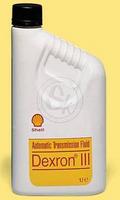
I have started using biodiesel in SoDak and my 2000 VW Jetta TDI. In my opinion, the Jetta runs better on biodiesel. it is quicker and gets about 2 mpg better mileage. Do not confuse this with a WVO (Waste Vegetable Oil) system, AKA
Greasecar. I am sort of a tree-hugger and the idea of not using any foreign oil appeals to me. I am running B100, 100% Biodiesel made from corn and soybean oils. Living in Minnesota, I am a member of the
Twin Cities Biodiesel Coop which is affiliated with
Fry Away . Yes, it's more expensive than "dino diesel", but has lower emissions, does not contribute to global warming, supports
MN farmers instead of a certain Middle-East Monarchy and smells really nice.
My 2000 VW Jetta's fuel lines are certified by VW for use with biodiesel so no worries, mate. Upon switching to biodiesel all you will need to do is change your fuel filter 1-2X over the next year as biodiesel is a solvent and, over time, will carry any petroleum diesel residue that has been building up in your fuel tank over the years to the filter and clog it up over time. If you have a new diesel, there will be no accumulation so no filter changes will be necessary.
The issues with converting the Volvo are more complicated. The Volvo's rubber fuel system components will deteriorate over time. I am in the process of switching the main and return fuel lines in SoDak over to plastic-available from junked SAAB 900's. I am on my third tank of biodiesel in SoDak and have had no issues. My fuel pump has been rebuilt so I am assuming it has
Viton seals and not rubber ones. If not, I'll find out soon :) Viton is a fluoroelastomer and does not degrade in biodiesel.
McMaster-Carr sells Viton tubing. Search "viton" on their site. You want 3.5mm inner diameter tubing for the injector return lines.
I have also heard rumors from
this site that Gates is making a biodiesel compatible fuel hose, Product ID# is 4219-BD, a 2ply black CPE compound (Chlorinated Polyethylene). Sales contact Mr. Bob Baier 303 744-5147
Here is an excellent link to Biodiesel resources!
SoDak has now been running for about 3,000 miles on B100 (100% biodiesel) with no issues. For the winter, it will use B50.























 . You need to remove the rear camshaft sprocket(make sure to lock the injection pump at TDC with the pin) and I found it necessary to remove the last two valve cover studs. There is a slot in the back of the cam that the tool fits into.
. You need to remove the rear camshaft sprocket(make sure to lock the injection pump at TDC with the pin) and I found it necessary to remove the last two valve cover studs. There is a slot in the back of the cam that the tool fits into.




